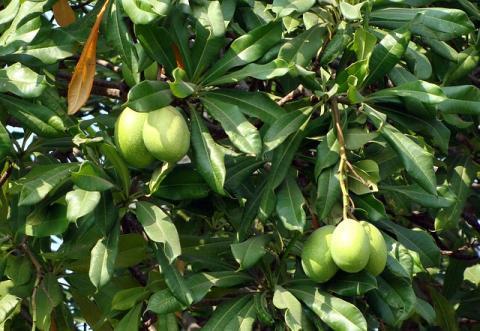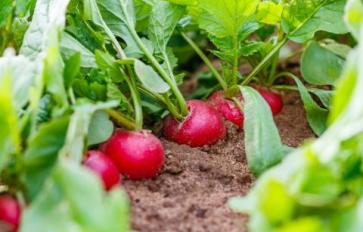
An evergreen tree with a luscious fruit, mangoes are best enjoyed from well cared for trees.
The mango tree, scientifically known as the Mangifera indica, is a hardy evergreen tree best suited for the tropical and sub-tropical regions. If the temperature doesn’t go below 40°F or about 4°C where you live, then yes, you can grow some heady, luscious mangoes. And mangoes are not just good for the palate; they are delicious, but come loaded with a host of benefits.
How to begin
Frankly, it’s easiest to get a mango sapling from your local nursery. Remember, there are many different varieties or cultivars of mangoes – let your gardener guide you in choosing the mango cultivar that would work best for your garden, depending on the temperature and soil quality. Plant the sapling in a hole that’s twice as wide and deep as the root ball – make sure the sapling is planted straight in an area with good drainage and adequate sunlight. The grafted scar, if any, should be just on the surface and make sure you prune off any shoots from the scar.
You can choose to grow a mango from seed, but it is a long and slow process. To do so, split the husk covering the seed. You can plant the seed in a pot filled with starter mix, but make sure that 1/4th of the seed is above the surface. Lightly water the seed and it will sprout in 10-20 days. Remember that planting of the seed means your young mango tree will only fruit after 5-6 years.
General care for your mango tree
Like with most fruiting trees, mango trees do well with deep watering of the tap root. If there’s a natural irrigation in the form of rainfall then do not additionally water the tree, but in dry weather water the tree deeply every 3-4 days. Remember to let the top soil dry in between watering.
- Stop watering about two months prior to flowering, and when the flowers start bearing fruit, resume watering.
- A good dose of NPK fertilizer twice a year, once after the fruit has been picked and once in the spring when the tree starts to freshly leaf, will make even the most recalcitrant trees start to fruit every year.
- Prune the trees every 4-5 years, making sure the canopy doesn’t turn too dense. Snap off any deadened branches and twigs on sight.
- Do not let any weeds grow near the trees and make sure the soil maintains good drainage. Stagnant water near the roots can cause rot.
- The mango tree is pretty hardy, but susceptible to over fertilization. NPK fertilizers are organic and work well on most soils. Nitrogen is essential for leaf growth, Phosphorus for good root formations and stem growth, as well as fruiting, while Potassium is needed for flowering, as well as raising the plant’s immunity against diseases.
Common pests of the mango tree
Copper fungicides are a one-stop shop that targets most of the molds and other fungi that affect a mango tree – the symptoms of which are spots on the fruit and leaf, lesions on the bark, and fruits dropping before ripening. Copper can also improve the soil quality of calcium rich soils. Spraying can and should be done in the affected areas – and on the flowering-fruiting set before ripening. Neem-based sprays (Azadirachtin) and manure can be added on a regular basis to target and kill mealy bugs, fruit flies and other such soft-bodied larvae. Fruit flies can also be curtailed using apple cider vinegar traps. In case your mango tree is plagued with wood borers, you will have to get an insecticide which can then be sprayed on the bark.
When to pick the fruits
To know whether your fruit is ready for picking, tug on it gently – if it easily snaps off, you have a delicious fruit just waiting to be eaten. If not, then the fruit hasn’t ripened yet. In case you are picking the fruits before they ripen, especially if you have a fruit fly infestation, tug on the fruit firmly – you have to hand pick mangoes. If you simply shake the tree and make the fruit fall on the ground, they will bruise and go bad rather quickly.You can choose to pick the fruits before they ripen and then wrap them in newspaper. Leave them in a warm, dry place for a couple of days – doing this releases ethylene gas which works towards ripening fruits.
So these are the basic steps into ensuring a good, healthy mango crop from good, healthy trees. And if you have a surfeit of this fruit, try this amazing mango curry recipe sure to please your tongue… Do share your mango tree tips or mango recipes with us in the comments section below.








